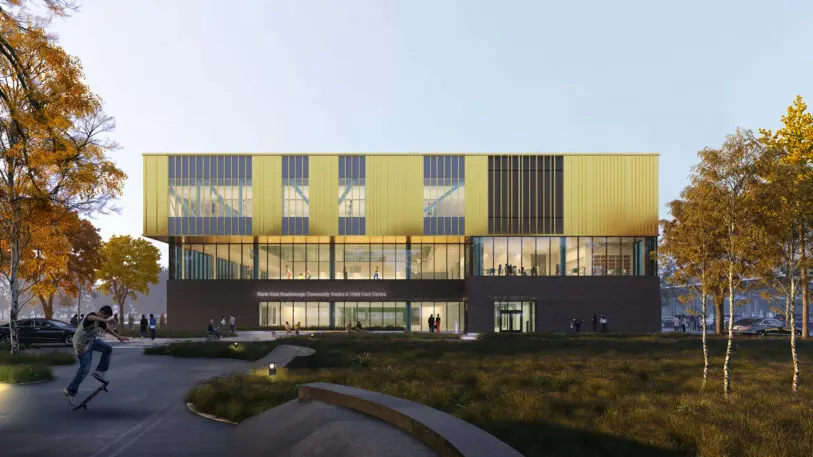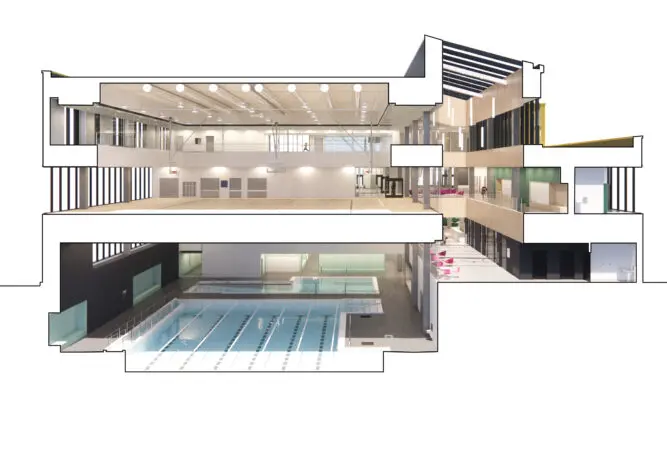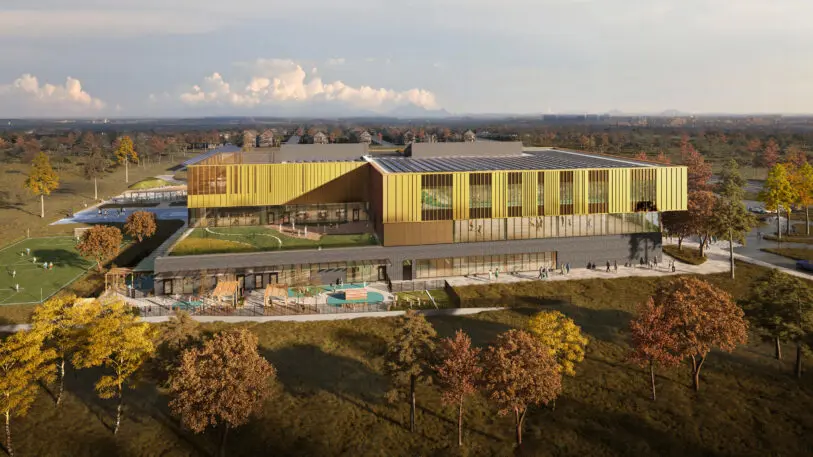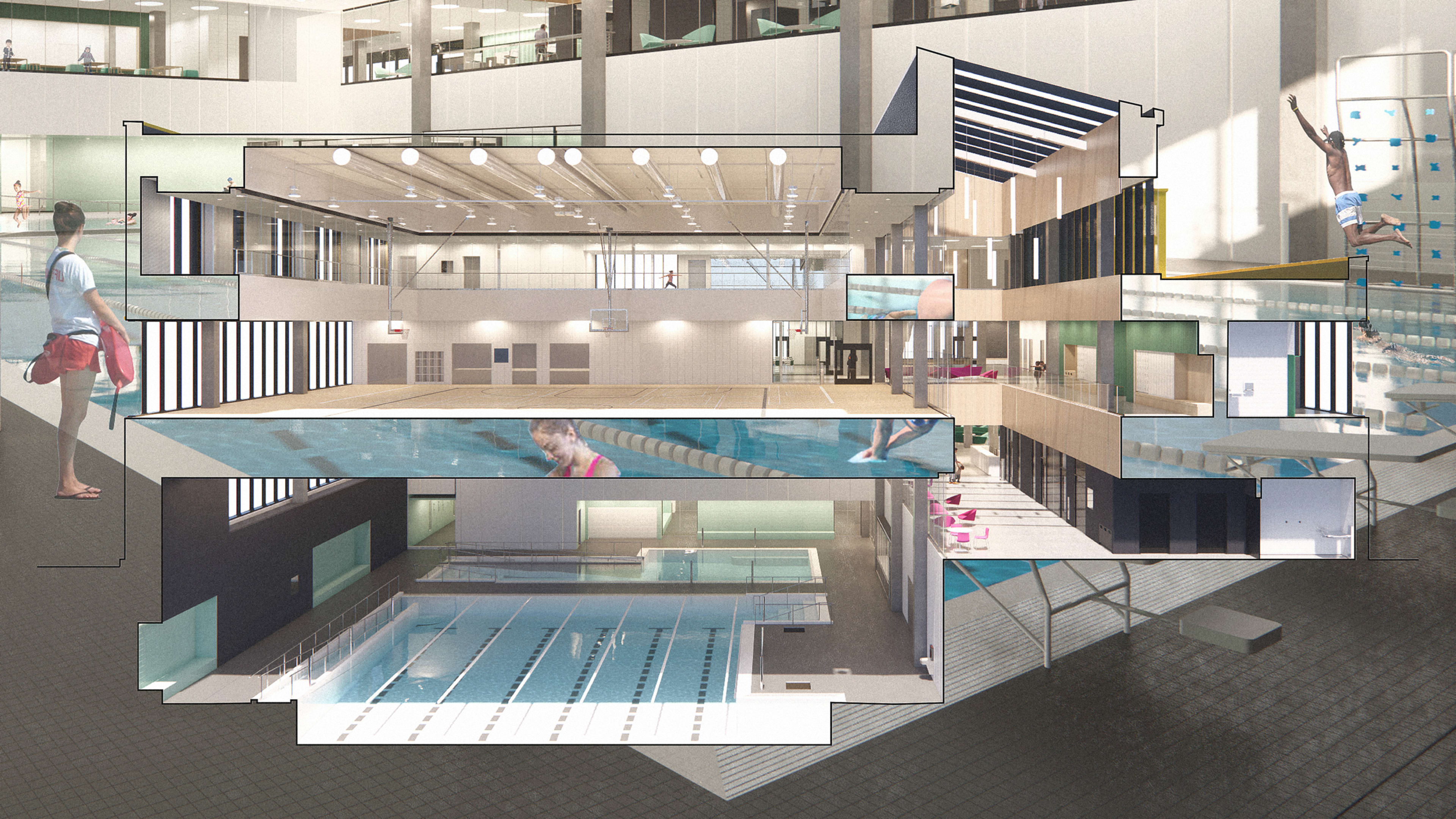Pools are massive energy hogs. Heating them up, and keeping them warm, is a costly expense, especially for cities operating large public pools. But these pools are also clamored for by communities. So when cities set out to appease their citizens, they often make a trade-off—providing a beloved public amenity and coughing up for the energy it consumes.


Places like Toronto are reconsidering how these huge energy users are powered. The new community center offers what the city hopes to be a model. The four-story community center features a gym, running track, childcare facility and indoor cricket field, surrounded by a public park. An all-electric building with considerable on-site renewable energy generation, it’s expected to produce as much energy as it uses—and produce net zero emissions.
Designed by the architecture firm Perkins&Will, the project is a pilot for the city of Toronto, which is hoping to make all its community centers and other city-built projects equally energy efficient. Addressing the pool energy issue was a primary goal. “This was a pilot project for the city as well as ourselves,” says Zeina Elali, senior sustainability advisor at Perkins&Will. “It’s something that’s been a challenge in the industry.”
Pools represent a major energy challenge for architects like Elali, who is tasked with helping clients get the projects they want while also reducing their environmental impact. That takes more than just swapping in LED lights or slapping on a few photovoltaic (PV) panels. “I think a lot of the private sector and public sector have already reached for the low hanging fruit,” says Elali. “It was about time to tackle the larger carbon contributors.”

Even with this more efficient heating, the pools still require energy. “You’re never going to bring down the usage to zero, so you’re bringing it down as much as you can through mechanical efficiencies,” says Christina Grimes, an associate at Perkins&Will.
The rest of the energy demand is being offset by the project’s expansive and inventive PV panel arrays. The roof of the building is covered with solar panels, as is a large parking lot that will double as space for a weekly farmers market. A walkway connecting a nearby housing development has a narrow PV canopy overhead, and the building itself has PV panels integrated into its facade. “We’ve got every kind of PV system you can imagine on this project,” says Grimes.

These energy efficiency efforts aren’t cheap, but the architects argue that the upfront capital costs will be more than offset over time. “Your utility bill should be zero,” says Grimes. “A 30-year timeline is the way you have to think of the return on your investment.”
More communities are seeing the wisdom in making these investments. Perkins&Will has designed two other net zero community centers for other cities in Ontario, and construction on both is expected to begin later this year. Each will have a pool.
Recognize your brand’s excellence by applying to this year’s Brands That Matter Awards before the early-rate deadline, May 3.
